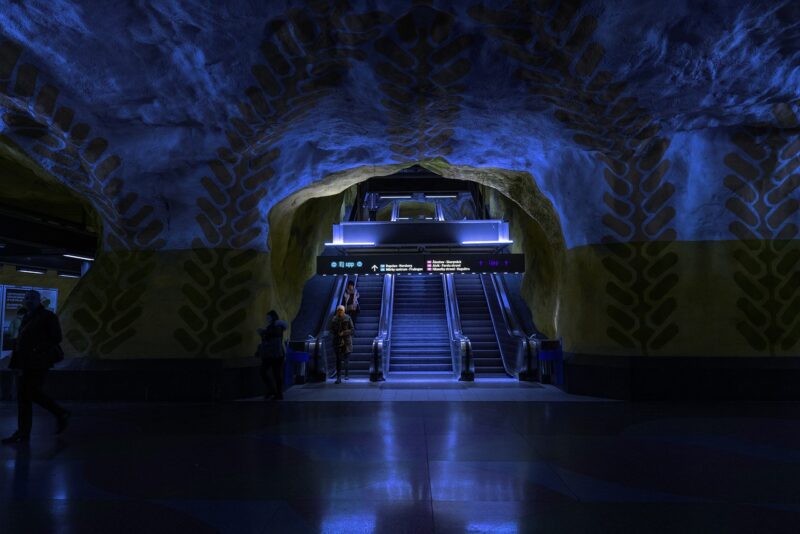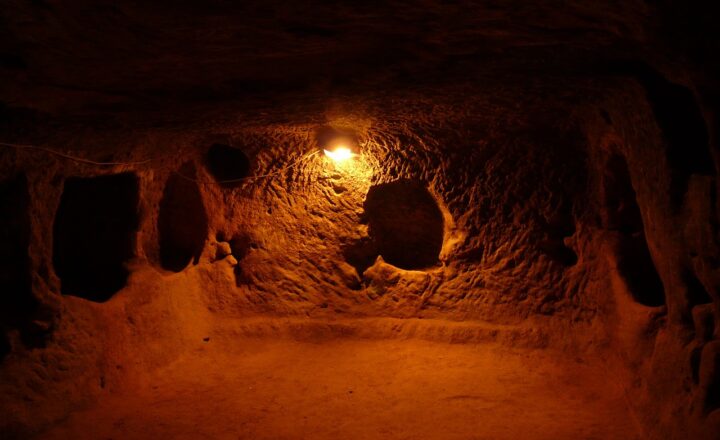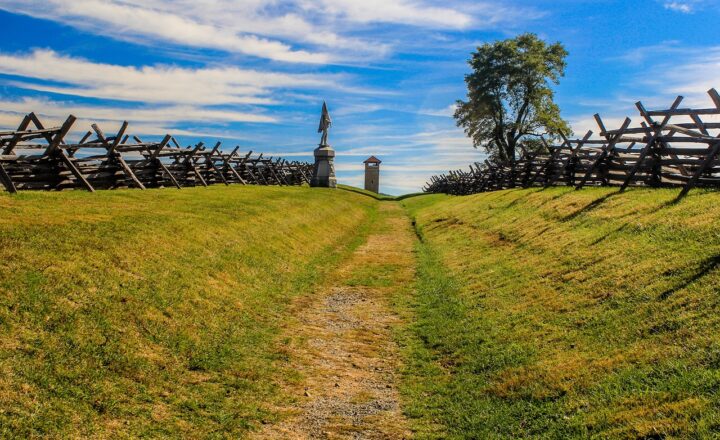How the World’s Largest Underground Cities Were Built Thousands of Years Ago Without Modern Technology
November 17, 2024

Throughout history, humans have exhibited remarkable ingenuity and resilience, particularly when faced with challenges in their environments. One of the most striking examples of this ingenuity is the construction of vast underground cities, often built thousands of years ago without the aid of modern technology. These subterranean marvels served various purposes, from places of refuge to centers of commerce and community life. This article will delve deep into how these extraordinary underground cities were constructed, the techniques employed by ancient civilizations, and the reasons behind their creation.
1. The Origins of Underground Cities
The history of underground cities dates back to ancient times, with several key civilizations leaving behind legacies of intricate subterranean architecture. Notable examples include the Cappadocia region in Turkey, the catacombs of Paris, the underground tunnels of Derinkuyu in Cappadocia, Turkey, and the Naours Caves in France.
These structures were built for varied reasons:
- Protection from Invasion: Many ancient peoples built underground cities to shield themselves from invading forces. The underground provided a strategic advantage, making it difficult for enemies to reach them.
- Climate Control: In regions where extreme temperatures were a concern, underground cities provided a more stable climate that was cooler in summer and warmer in winter.
- Resource Management: Underground structures offered a way to store grains and other resources, protecting them from pests and weather damage.
- Religious and Cultural Significance: Some underground cities served as sacred sites where rituals and ceremonies could take place away from prying eyes.
Understanding these motivations helps us appreciate why ancient peoples invested the resources and labor necessary to create these remarkable structures.
2. Techniques and Tools of Ancient Engineers
Without modern machinery, the builders of underground cities relied on rudimentary tools and labor-intensive techniques. Here are some of the methods they used:
- Digging with Simple Tools: Ancient people primarily used hand tools such as chisels, hammers, and shovels to excavate rock and soil. These tools were often made from available materials such as stone, bone, and later on, metal.
- Mining Techniques: Many underground cities used mining techniques, employing techniques like surface mining and tunnel digging to create extensive networks of underground passageways. Ancient quarrying methods often involved chiseling out blocks of stone from the earth.
- Building Supports: To prevent collapses, builders developed early forms of support using wooden beams or stone arches. Arches, in particular, allowed for greater stability and longer spans in tunnels.
- Ventilation Systems: Ancient architects designed ventilation shafts and tunnels to ensure air circulation within the cities, preventing the buildup of harmful gases.
These innovative techniques highlight the skilled craftsmanship and architectural understanding possessed by ancient engineers, often passing knowledge through generations.
3. Notable Underground Cities
Several underground cities worldwide exemplify the incredible feats of engineering achieved by ancient civilizations. Let’s explore some of the most notable ones:
- Derinkuyu, Turkey: One of the largest known underground cities, Derinkuyu stretches approximately 60 meters deep and could house up to 20,000 people. It features complex networks of tunnels, living quarters, ventilation shafts, and even stables for livestock.
- Çatalhöyük, Turkey: Often regarded as one of the oldest urban settlements, its inhabitants built many of their homes partially below ground level, allowing for cooler living conditions.
- Naours Caves, France: These vast caverns were dug out of chalk and used during the Middle Ages to shelter villagers from war and looters. The caves contained living quarters, bakeries, and churches within.
- Montreal’s RESO: Though built under modern circumstances, it’s worth noting that the RESO is North America’s largest underground complex, highlighting how contemporary cities still view the advantages of subterranean precincts.
Each of these locations showcases the diversity of purpose that underground cities served and underlines the incredible architectural feats of their builders.
4. Cultural and Historical Significance
The construction of underground cities reflects the rich tapestry of human history, culture, and adaptability. These subterranean wonders are not merely architectural achievements but also cultural landmarks that tell the stories of the societies that built them.
As cities became increasingly urbanized, the techniques and cultural value associated with underground living shifted. However, these ancient endeavors serve as a testament to human resilience and the innovative spirit, providing valuable insights into how historical challenges were met with extraordinary solutions. Additionally, they continue to attract researchers and tourists, fueling interest in archaeology and heritage conservation.
5. Modern Reconstructions and Preservation
Modern excavations and archaeological studies aim to preserve and reconstruct these historical sites, gaining insights into ancient construction techniques. Techniques employed today include:
- 3D Mapping: Technologies like 3D laser scanning enable researchers to create accurate maps of underground cities, thus preserving their layout and design for study and future reference.
- Restoration Efforts: Many sites are undergoing restoration to prevent further erosion and damage, helping to maintain the integrity of these ancient structures.
- Tourism and Education: Underground cities are increasingly being opened to the public, allowing visitors to explore these fascinating environments while promoting cultural and historical education.
These modern efforts ensure that the legacy of ancient civilizations endures and that their incredible achievements are recognized and appreciated.
Conclusion
The construction of underground cities represents a fascinating chapter in human history, illustrating the creativity, resourcefulness, and determination of ancient civilizations. These extraordinary spaces serve as a reminder that even in times of adversity, people have found ways to protect themselves, innovate, and thrive using the tools and knowledge available to them. Through studying these underground cities, we gain insight into not just the architectural techniques of the past but also the values and social structures of those who built them, enriching our understanding of human history.
As we move further into the 21st century, it is crucial to appreciate and preserve these remarkable sites, ensuring that future generations can experience and learn from the remarkable ingenuity of our ancestors.






